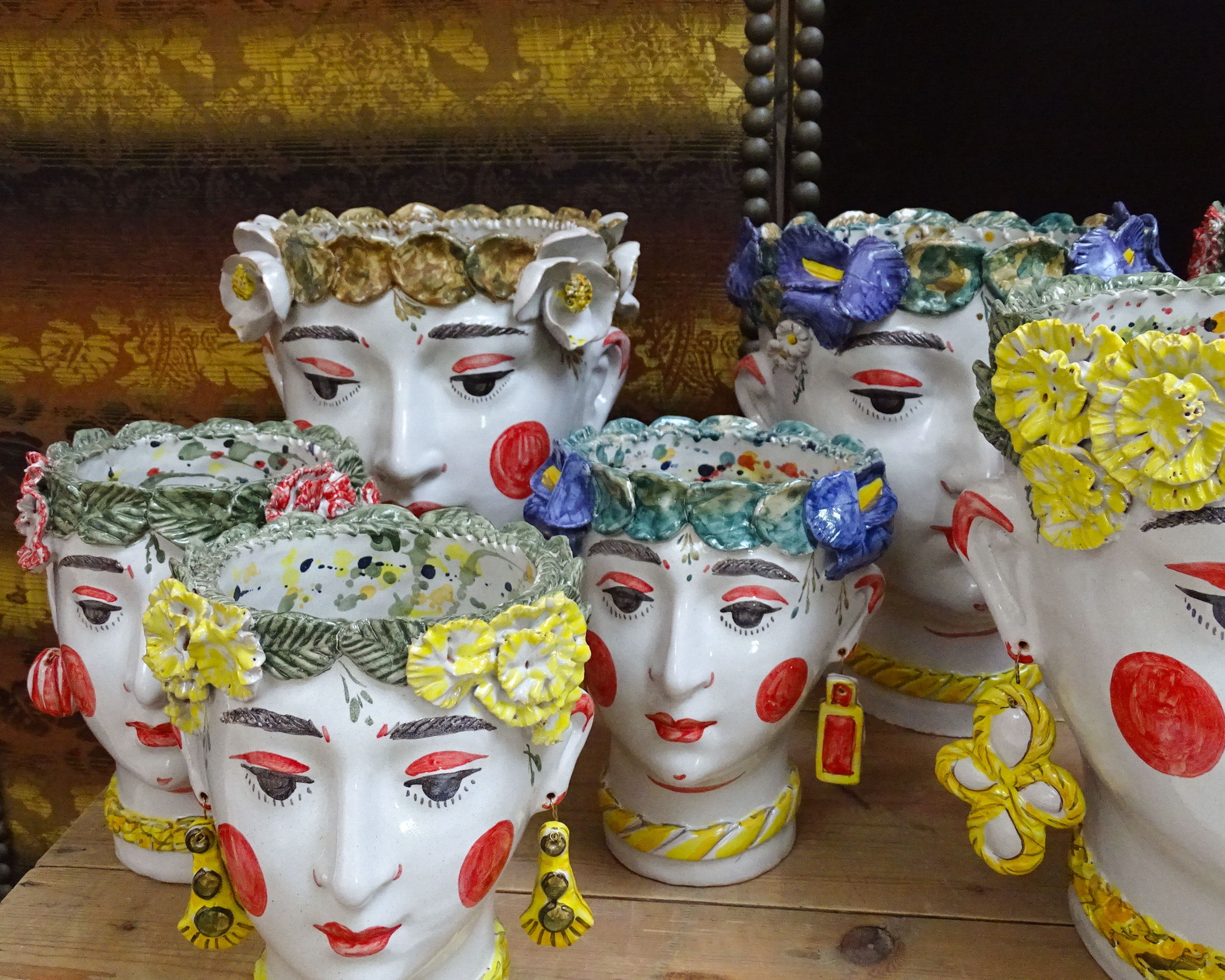Why Visit Now: Seville
Grilled sardines on lively terraces, a vibrant blend of ancient cultures, evolving art and artisanal treasures, and celebrations like Holy Week and Feria: Fernwayer’s guide uncovers what makes Seville unique and what's changing up the scene.
For many visitors to Seville, the main draw is exquisitely simple: the year-round fabulous weather.
Bright sunshine, delicious warmth, brilliant blue skies, with pleasantly mild winter, warm spring (filled with major events – Holy Week and Feria) and autumn, and sizzlingly hot summer. Life is lived outside, whether sipping a Seville orange G&T or eating grilled sardines on a pavement terrace.
Look around and you’ll see a confluence of ancient cultures (Roman, Visigoth, Arab, Christian) with contemporary diversions – artisan accessories, ceramics centers, alfresco entertainment, and vibrant street art. The city is easily walkable, too, so go out and explore.
1. Go Green
If you’re looking for sustainable, ethical fashion in Seville, try Verde Moscu in the Alfalfa district, near the Setas. All their brands, including Thinking Mu’s natty knits and Armedangels’ sleek tees, are fair trade and made of either organic or recycled fabrics; look out for the hemp pants. We love the strong, stylish, lightweight backpacks in pretty colours by Spanish brands Lefric and Urbanauta.
For home goods, El Jarillo Lata, in the boho Macarena barrio’s Calle Feria, stocks handy shampoo bars, foldable silicone bowls, and cotton bags.
Andalucia’s fabulous fresh produce, from seafood (prawns, clams, sustainably fished bluefin tuna) to fruit and vegetables (oranges, avocadoes, tomatoes, mangoes, pomegranates), takes center stage in restaurants. Two of our favorites are chic new arrival Balbuena y Huertas in Triana, with four tasting menus, one of which is all-vegetarian; and organic slow food pioneer ConTenedor in the Macarena district, along with its sibling T Gastronomic Space in Alfalfa, where diners sit around a large circular wooden table. Bluefin tuna is sustainably caught off Cadiz’s Costa de la Luz – try it, cooked with minimal fuss, at one of Seville’s two Michelin-starred restaurants, Cañabota.
2. Art Spaces
Renowned for its superb museums, such as the Museo Bellas Artes (Fine Arts Museum), Seville also has quirkier, more off-the-beaten path cultural hubs.
The Fabrica de Sombreros, just off Calle Castellar in the Alameda district, is a hat factory converted into workshops and co-working, with drawing and dance classes among the offerings. Further to the northern edge of the old center is the Plaza de Pelicano, a corralón draped with climbing plants which houses an artistic community: ceramics, photography and sculpture studios; don’t miss their open days.

More conventional, though no less fascinating, is Espacio Derivado on Plaza Cristo de Burgos, a beautifully restored 1920s regionalist house by Sevillano architect José Espìau. The upstairs is private, but the downstairs part hosts avant-garde exhibitions in the intriguing rooms. A tour explaining the house’s history is included in the entry price.
3. Orange Crush
For a city known worldwide for its oranges – the bitter variety, used to make marmalade – unsurprisingly, Seville produces some wonderful citrussy drinks.
The latest is Sevirol, a local version of Aperol, made of bitter orange, orange blossom, and 11 distilled roots. Its distinctive flavor is ideal to use in cocktails, and the centrally located shop (calle San Eloy) offers tastings. A non-alcoholic version is out in February.
For gut-health, organic Kombucha-T blends Vietnamese white tea with orange blossom – find it in Balino Yoga Café (calle Julio Cesar) and Condênde in Feria market (see 8, below). For a G&T, look no further than Tanqueray Flor de Sevilla (Seville Orange in the US), available in both standard and zero alcohol versions. It was inspired by founder Charles Tanqueray’s 19th-century recipe. This gin is widely available in the city.
4. Outdoor Tunes
Especially in the hot summer months, night-time outdoor concerts are held in fabulous settings around Seville – the Alcazar palace has a summer season of jazz and classical music in the gardens, while at Palacio de las Dueñas, former home of the late, beloved Duchess of Alba, opera recitals are held most months.
Whatever your views on bullfighting, the Maestranza has a select program for its unique circular space.
If pop and rock are more your thing, Icónica Fest in June and July takes place in the Plaza de España, the vast semi-circular structure inside Maria Luisa Park, part of the 1929 Expo. The magnificent building is lit up in colour, creating a spectacular backdrop for the stage, while the audience (seated or standing) occupies the plaza itself. The playlist for 2024 includes Tom Jones, Marc Anthony, Carl Cox, Keane, Arcade Fire, and Take That.
5. Top Tiles
Seville is also known for its azulejos, or ceramic tiles. Start off at the Ceramic Centre in Triana, to find out how they are made – since Roman times – and the different techniques of decoration: cuerda seca (using dry rope to separate the colors), cuenca (using a mould imprint) and Pisano (painted on the tile). The center is housed in a former factory – Triana was the epicenter of the tile industry, using clay from the riverbank.
For a more contemporary take on ceramic art, the ExVotos, Luciano Galan and Daniel Maldonado, make eye-catching painted heads which are sought after for the finest private homes and galleries in Spain, the US and beyond – they have pieces on Lauren Santodomingo’s Moda Operandi website.

You can visit the Exvotos' studio near calle Feria by appointment, while their signature scented candles can be picked up at curated designer store Cuqui Castellanos. To buy antique ceramic pieces, head to Populart in Santa Cruz, near the cathedral, while Tenderete, near Espacio Derivado, has both traditional and fresh styles.
6. Creative Corners
When you’re buying pieces in Seville to take home as gifts, it’s always good to know that they were made locally, by hand. You can find plenty of artisan shops in Seville, where everything is designed and made by small-scale producers. Look up the collective Recoveco Market, which runs weekend routes in the San Julian barrio, twice a year. Otherwise, The Printed Rabbit has bags in gorgeous fabrics, while nearby is Buffuna Hats, where milliner Patricia Buffuna creates elegant one-off headpieces, panamas and berets.

In the city center, Hecho en Sevilla shows works by local designer-makers, including ceramics, leather bags, and jewelry. Look out for Yukiko Kitahara’s delicate white cups and bowls with exquisitely rendered miniature animals.
The Artisan Federation of Seville puts on thrice-yearly craft fairs (May, September/October, and December/January) in Plaza Nueva, which bring together around 70 artisan makers, from hand-pressed paper to hand-painted silk scarves.
7. Coming Up
Like any culturally rich city, Seville is always cooking up interesting plans for new museums and other cultural centers.
The Casa Natal de Velazquez, the house where Spain’s most celebrated baroque painter (Las Meninas) was born, is being converted into an interpretation center looking into Diego Velazquez’s life and work. The 16th-century dwelling in the Alfalfa district - possibly the oldest house in Seville – will be the only center dedicated to the painter in Spain.
Over the river, Castillo San Jorge in the ceramics district of Triana houses a museum about the Inquisition, which was headquartered in Seville. Soon the castle will welcome a display of religious craftmanship by the Gremio de Arte Sacro: embroidery, gold and silversmithing, wooden sculpture, gilding, lacemaking, and more.
Industrial heritage abounds in the city, and the vast Royal Artillery Factory, in San Bernardo district, was recently restored and has started to put on exhibitions.
8. Market Eats
Many sevillanos still do their shopping in markets – three of the best-known are Triana, Arenal and Feria. As well as the stalls stacked high with the juiciest tomatoes, freshest sardines and tenderest jamon iberico, places to eat which enjoy the buzz of their surroundings abound, from fish and seafood to vegan dishes, and gourmet sandwiches.
In Feria market, take your pick from fried anchovies, marinated dogfish, grilled squid, and 20-odd more fishy dishes at La Cantina – you eat outside next to a 13th-century Gothic church; or try Brazilian tapioca cheese bread, along with organic Kombucha, at Condênde.
The menu at Veganitessen, in Arenal market, features bean or soy burgers, lentil meatballs, and seitan steaks, along with natural soft drinks. Sandwiches go gourmet at Triana market, atop Castillo San Jorge (see 7): pulled-pork brioche, or artichoke, edamame, and cashew pesto baguette, at the curiously named Bocadi-Yeah!
9. Street Art
You don’t need to go to a gallery or museum to see art in Seville – it’s all around you.
Three of the most interesting artists working in the city’s urban environment are Alexandra del Bene, Jonzi, and Patricio Hidalgo.
Hailing from Rome, Alexandra is known for her beautiful painted metal shutters of shops, bars, and restaurants – her bold colors and fun designs reflect the interiors (check out tapas joints El Rinconcillo and Bodeguita Romero). Known as Seville’s Banksy,
Madrid native Jonzi places silhouette stickers around barrio Santa Cruz – hooded nazarenos (Holy Week figures) skateboarding along a wall, Romeo and Juliet below an achingly romantic balcony, a minotaur on a ceramic map of the “labyrinth” of the medieval Jewish quarter. Humor and cheekiness characterize his works, always respecting the ancient buildings.

Patricio’s flamenco paintings, often in simple, impactful black and white, are replete with the art form’s raw emotion – legendary singer Camaron’s pained face. See this Ibizan artist’s astonishing commission on boards around the building site next to Plaza Gavidia.
10. Rooftop Bars
Thanks to year-round sunshine and daytime temperatures that vary from mild to hot, with cool to warm nights, rooftop terraces in Seville are always popular – especially when your cocktail is paired with musical entertainment.
In the area round the cathedral you’ll find a glut – the EME Terraza offers a female DJ and superb cathedral views, including inside the Patio de Naranjos, while Pura Vida Terraza’s Giralda backdrop is hard to beat, especially for the weekly live flamenco shows.

More chilled out is the Corner House’s rooftop bar – eyeball the Alameda’s hipster scene from on high (El Disparate ground-level restaurant is excellent). Casa Romana’s Roof bar has pretty décor, with traditional mosaics, and comfortable sofas – and unbeatable views of contemporary landmark the Setas, colorfully illuminated at night. ||
